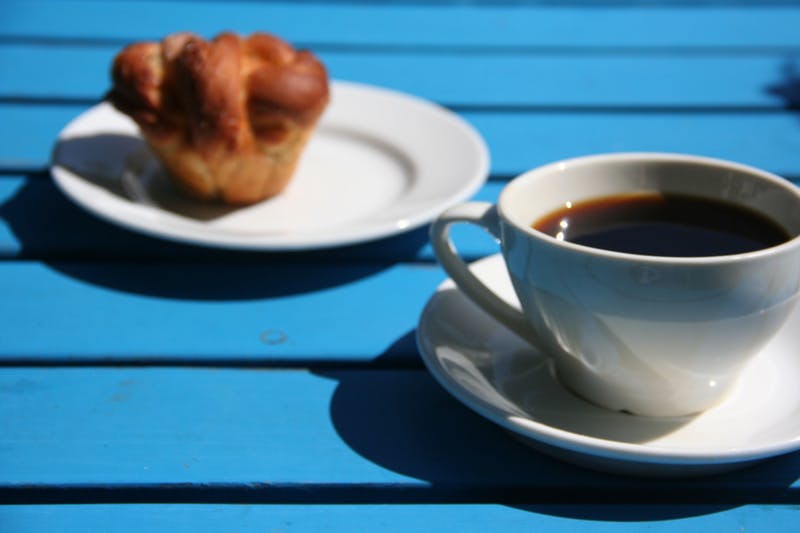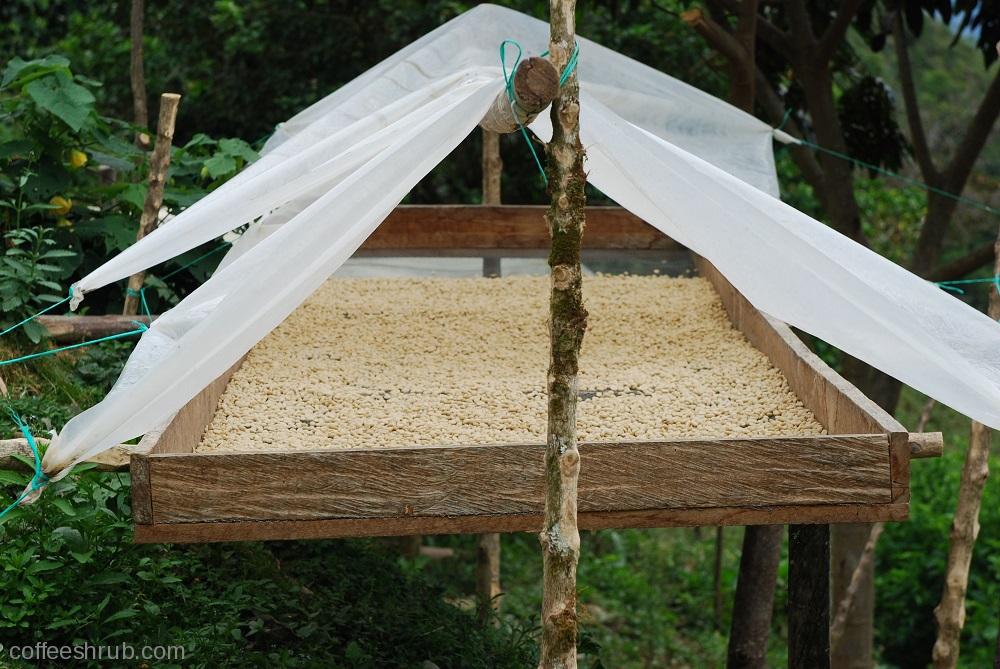"Magic Latin America" Coffee Culture in Latin America

For professional baristas, please follow the coffee workshop (Wechat official account cafe_style)
Generally speaking, coffee producing areas are mostly located in developing countries, while coffee consuming countries are the so-called first world. Although Latin America is a coffee producer, Latin Americans are also coffee lovers, thus giving rise to a unique coffee culture.
Coffee should be the most common refreshing drug in the world, and it is also the most economically valuable drink. The United States is the country with the highest coffee consumption, consuming 400 million cups a day. In Finland, the average person drinks four to five cups of coffee a day, the highest per person. Other countries such as Sweden, Italy, Japan and South Korea are also important consumers of coffee.
It is believed that in the sixth century, an Ethiopian shepherd inadvertently discovered that the sheep became energetic after eating the red fruit of a shrub, and the shepherd distributed the fruit to the monks, which really helped the monks stay awake during evening prayers. This kind of fruit is coffee beans. Historians agree that coffee originated in the Ethiopian highlands and was originally eaten by directly chewing coffee beans, not the current brewing style.
In the 15th century, coffee was introduced to Mecca, and Muslims who came on a pilgrimage to Mecca spread it all over the Islamic world. So from Cairo, Istanbul, Tehran, all the way to Venice. At the end of the 17th century, coffee became a common commodity in Europe, and coffee shop culture gradually formed, and because Europeans planned to produce coffee in the colonies, coffee could become a worldwide drink and a global crop.
There are many versions of the introduction of coffee into Latin America. It is believed that French naval officer Gabriel Mathieu de Clieu,1687-1774 opened up the Latin American coffee business when he stole one or more coffee seedlings from the royal greenhouse and brought them to the Caribbean island of Martinique in 1720. Another said that the Dutch were the first to transplant coffee to the Latin American colony of Suriname.
Dikrou, a French naval officer, opened up a great opportunity for Latin American coffee in 1720 when he stole one or more coffee seedlings from the royal greenhouse and took them to Martinique Island in the Caribbean. (figure: network)
The coffee growing belt is distributed between the latitudes of 25 degrees south and north. The countries located in this growth zone include not only Ethiopia, Yemen and Kenya, but also the vast expanse of Latin America. Arabica is a high-altitude variety, which is the mainstream variety of coffee, while there are many highlands ranging from 60 to 1500 meters in Latin America, coupled with sufficient sunshine, which is suitable for Arabica species to grow. A coffee plant can be harvested after four years, and then it can be produced continuously for several decades. It is a cash crop with high return on investment. However, coffee is a crop that requires a lot of labor. During the colonial period, the owners of the coffee plantations were all local oligarchs and big landlords, and the source of labor was aborigines or slaves. At the end of the 19th century, in addition to the traditional large coffee gardens, small family coffee farmers began to appear, while there were also well-funded multinational corporations scrambling to eat coffee cakes. Behind the coffee economy in Latin America is a history of cheap labor full of exploitation, injustice and monopoly.
Today, Latin America is one of the most important coffee producing areas in the world, and coffee has become a specialty of Latin America. According to statistics, coffee plantations account for at least 45% of the arable land in Latin America today. Because of its geographical location, coffee beans from Latin America are mainly sold to the United States, followed by Europe and Asia. Generally speaking, coffee producing areas are mostly located in developing countries, while coffee consuming countries are the so-called first world. Although Latin America is a coffee producer, Latinos are also coffee lovers. In addition to the common American style, mocha, latte, cappuccino and espresso, each region also has its own drinking methods and terms, which leads to a unique coffee culture.
Brazil has the highest coffee production in the world, and its coffee consumption is among the top 10 in the world. Brazilians regard coffee as a panacea for social communication, and they often drink cup after cup of espresso unwittingly at various parties. Mexicans love to drink cappuccino, but its milk ratio is as high as 80% and it is no longer the original practice of serving it in an Irish glass. A popular "caf é de olla" in Mexico is to heat the water in a pottery pot, boil the water with cinnamon and sugar bricks and boil for another 20 minutes, or add fennel as you like, then pour in the freshly ground coffee powder, turn off the heat as soon as it boils, let it taste for five minutes, and finally filter the residue into a clay cup.
The improved cappuccino made by Mexicans has a milk ratio of up to 80% and is served in an Irish glass, which is no longer the original practice.
Colombian coffee has been well received and known as "Juan." The brand "Juan Valdez" has gained international popularity. "Juan. Vaders, created by the Colombian Coffee Farmers Association, is a kind-looking farmer with a mustache and a small donkey. Colombians drink cortado coffee most often, with half coffee and half milk. In addition, Colombia's "caf é chaqueta" is similar to Mexico's "pottery pot coffee", putting sugar bricks in boiling water and adding coffee powder as if to put a sweet coat on the coffee.
Colombian coffee brand Juan. Juan Valdez is extremely well-known in the international market.
"Juan. Vaders, created by the Colombian Coffee Farmers Association, is a kind-looking farmer with a mustache and a small donkey.
Jamaica's Blue Mountain Coffee is one of the common options in cafes around the world, while other places such as Cuba, Dominica, Guatemala, Honduras, Nicaragua, El Salvador, Costa Rica, Panama, Venezuela and Peru also add a variety of drinking methods to the production of high-quality coffee.
Guatemala only began to produce coffee in the middle of the 19th century, and because of its suitable climate and geology, it was able to produce high-quality coffee. The picture shows a cafe in Guaramara. Even American coffee is very particular about brewing and brewing. (photo courtesy of the author)
Cafe culture has been popular in Latin America for more than a hundred years. Like Europe, cafes in Latin America are also places where poets and poets discuss literature and politics, giving birth to revolutionary ideas and concepts of freedom, and there are still many cafes with a history of more than a century. For example: coffee é Tortoni in Buenos Aires, Caf é Brasilero in Montevideo, Columbus Caf é in Rio de Janeiro (Confeitaria Colombo), Caf é de Tacuba in Mexico City.
From a seedling to an important coffee producing area, a unique coffee culture has been spawned, and this exotic plant has found magical elements of deep cultivation in Latin America.
Important Notice :
前街咖啡 FrontStreet Coffee has moved to new addredd:
FrontStreet Coffee Address: 315,Donghua East Road,GuangZhou
Tel:020 38364473
- Prev

Fika |Swedish coffee culture and lifestyle
Professional barista exchanges, please pay attention to coffee workshop (Weixin Official Accounts cafe_style) In April this year, Britain's Daily Telegraph listed the world's top 20 coffee-drinking countries. Sweden is sixth on the list, consuming an average of 8.2 kilograms of raw coffee a year per person. Besides cold weather, what causes
- Next

About the history of coffee, what is the origin of coffee?
Professional baristas Please follow the Coffee Workshop (official Wechat account cafe_style) at the beginning of the seventh century, in 575 AD, the Arab Karl was grazing in the Ethiopian steppes of Africa when he discovered a coffee tree. In the eighth century, Arabs used coffee as wine and medicine. In the ninth century, Arab Islam began to drink coffee by roasting and grinding raw beans. Arab merchants in the tenth century
Related
- How did the Salvadoran coffee industry develop in Central America?
- What exactly does the golden cup extraction of coffee mean?
- The Origin of Coffee flower
- [2023 Starbucks World Earth Day] there are more meaningful things besides free Starbucks coffee!
- What kind of coffee is there in Spain? 9 Flavors of Spanish Coffee
- Aromatic African coffee| Kenya's coffee culture and historical production area
- Liberica Coffee Bean knowledge: the characteristics of Liberian Coffee beans of the three original species of Coffee beans
- The origin and formula of Spanish latte introduces the taste characteristics of Bombon coffee in Valencia, Spain.
- How to adjust the solution of over-extracted coffee
- What is the tasting period of coffee beans? What is the period of coffee and beans? How should coffee wake up and raise beans?

